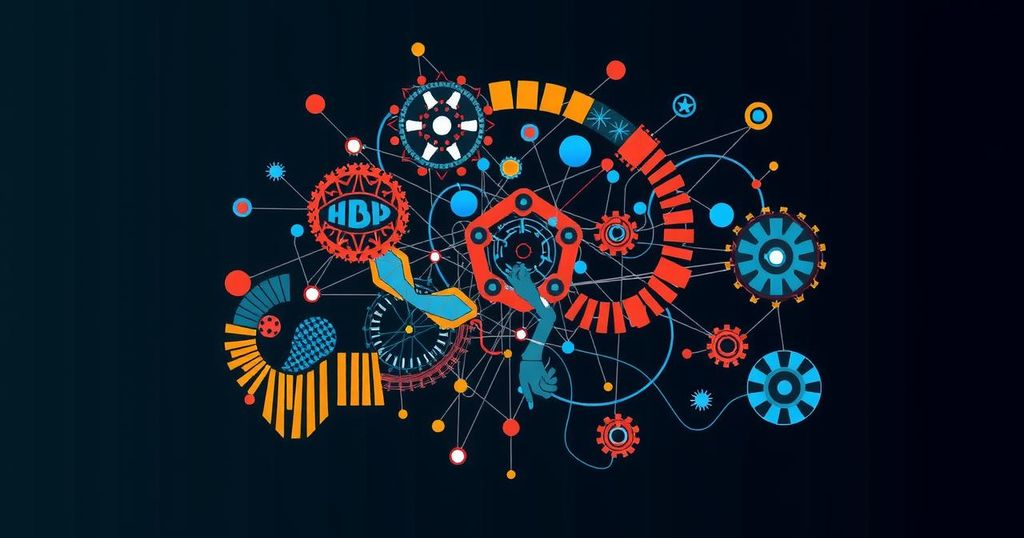H2O.ai has unveiled two new vision-language models, H2OVL Mississippi-2B and H2OVL Mississippi-0.8B, which excel in document analysis and OCR tasks. Despite their smaller size, these models outperform larger competitors. H2O.ai’s focus on affordable and scalable AI solutions positions it well in the enterprise market, helping companies efficiently tackle document-heavy challenges.
H2O.ai, a leader in open-source AI solutions, has introduced two innovative vision-language models aimed at enhancing document analytics and optical character recognition (OCR) functionalities. The newly launched H2OVL Mississippi-2B and H2OVL Mississippi-0.8B models demonstrate impressive performance against larger counterparts from tech giants, presenting an efficient alternative for enterprises handling extensive document workflows. The H2OVL Mississippi-0.8B model, which comprises only 800 million parameters, outperformed all competitors, including those with significantly more parameters, in the OCRBench Text Recognition task. Concurrently, the H2OVL Mississippi-2B model, with 2 billion parameters, achieved robust results across various vision-language benchmarks, showcasing its strong capabilities. Sri Ambati, the CEO and Founder of H2O.ai, emphasized the design of H2OVL Mississippi models as high-performance yet economically viable solutions, particularly in AI-powered OCR and document analysis. He stated, “We’ve designed H2OVL Mississippi models to be a high-performance yet cost-effective solution.” Ambati asserted that combining sophisticated multimodal AI with operational efficiency allows these models to deliver scalable Document AI solutions across diverse industries. The introduction of these models aligns with H2O.ai’s strategy to democratize AI technology, making the models freely accessible via Hugging Face. This accessibility encourages developers and businesses to customize these models for targeted document AI demands, facilitating greater innovation and application in the field. Ambati articulated the economic benefits associated with these streamlined models, noting that they are designed for efficient operation on smaller infrastructures, thereby offering sustainable fine-tuning for specific document types at lower costs. H2O.ai’s models address the prevailing challenges in document analysis, such as difficulties in processing poor-quality scans and complex handwriting. Industry experts believe that H2O.ai’s tailored approach could disrupt the dominance of larger tech firms in the document analysis sector. By prioritizing specialized models that focus on efficiency, H2O.ai is poised to appeal to enterprises seeking cost-effective solutions in a rapidly evolving digital landscape. Ambati reiterated H2O.ai’s commitment to making AI accessible, stating, “At H2O.ai, making AI accessible isn’t just an idea. It’s a movement.” The company’s dedication to producing modular foundational models aims to broaden the scope for AI application and utility within various industries. With significant funding amounting to $256 million from notable investors, H2O.ai has cultivated a robust community of over 20,000 organizations, including more than half of Fortune 500 companies. This commitment to providing practical, open-source AI solutions places H2O.ai at the forefront of the ongoing digital transformation efforts across industries. As organizations face challenges in leveraging unstructured data and require efficient document processing solutions, H2O.ai’s vision-language models could serve as a valuable asset, alleviating the computational burdens often associated with larger models. The performance of these models in real-world applications will be pivotal in determining their impact on the future of enterprise AI.
H2O.ai has emerged as a significant player in the AI landscape by offering open-source AI models that seek to democratize access to advanced technologies. The introduction of smaller yet efficient models like H2OVL Mississippi-2B and H2OVL Mississippi-0.8B provides alternative approaches towards document processing, allowing businesses to handle increasingly complex document workflows. This innovation reflects an industry trend where organizations prioritize both performance and economic efficiency in AI solutions.
The introduction of H2O.ai’s new vision-language models represents a pivotal development in the document analysis sector, offering efficient solutions that challenge larger competitors. By emphasizing the economic viability and performance capabilities of smaller models, H2O.ai is positioning itself to capture a significant market share among businesses seeking effective Document AI solutions. The potential success of these models underscores an essential shift towards optimizing AI technologies for practical enterprise applications.
Original Source: venturebeat.com

Leave a Reply